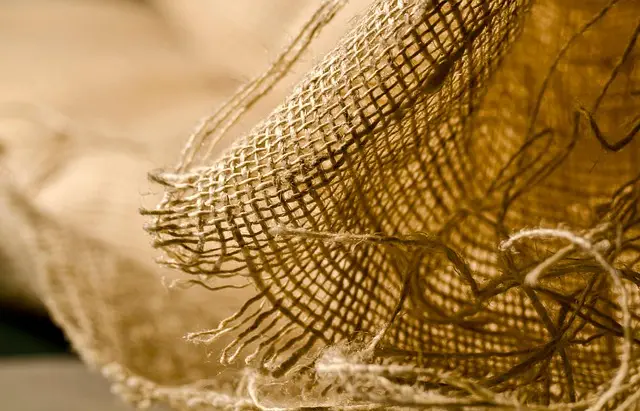Muscle soreness is caused by microscopic tears in muscle fibers and inflammation, with natural remedies like Kava, Kratom, and CBD offering potential solutions. Kava calms muscles through GABA receptors, Kratom provides pain relief and relaxation (depending on strain) by interacting with opioid receptors, while CBD reduces inflammation through the endocannabinoid system. Although all have anti-inflammatory properties, Kratom may offer faster relief due to its direct interaction with opioid receptors compared to CBD. Kava carries liver damage risks with prolonged use, Kratom has mild side effects, and CBD is generally safe. Kratom stands out for its comprehensive solutions: pain relief and relaxation without drowsiness, setting it apart from Kava and CBD, making it a promising choice for athletes seeking faster recovery.
“Experience instant relief from muscle soreness with natural remedies Kava, Kratom, and CBD. This comprehensive guide delves into the science behind muscle stiffness, its causes, and how these ancient herbs offer effective solutions. We compare Kava and Kratom’s effects and safety for post-workout recovery, highlighting their unique benefits. Discover how Kratom enhances active recovery routines, offering a natural alternative to traditional methods. Integrate these powerful plants into your post-exercise regimen for faster healing.”
- Understanding Muscle Soreness and Its Causes
- The Role of Kava, Kratom, and CBD in Relieving Soreness
- Comparing Kava vs. Kratom for Muscle Soreness: Effects and Safety
- Exploring the Benefits of Kratom for Active Recovery
- Integrating Kratom into Your Post-Workout Routine
Understanding Muscle Soreness and Its Causes

Muscle soreness is a common issue that arises from various activities, ranging from intense workouts to everyday physical labor. It’s essentially a response by your muscles to exertion or damage, marked by microscopic tears in muscle fibers and subsequent inflammation. This process leads to the release of chemicals that signal pain sensors, resulting in the aching sensation we recognize as muscle soreness.
Several factors contribute to this condition, including exercise-induced muscle stress, overuse from repetitive motions, or even certain medical conditions. Kava, kratom, and CBD are often sought after as natural remedies for managing muscle soreness. While kava is known for its calming effects, kratom offers a range of potential benefits, from pain relief to relaxation, depending on the strain. CBD, on the other hand, has gained attention for its anti-inflammatory properties, which could potentially alleviate muscle discomfort. Comparing these three options—kava vs. kratom vs. CBD—in terms of effectiveness and side effects can help individuals make informed choices when seeking relief from muscle soreness.
The Role of Kava, Kratom, and CBD in Relieving Soreness

Kava, Kratom, and CBD are three natural substances gaining attention for their potential to soothe muscle soreness. Each has distinct properties that can work synergistically or independently to provide relief. Kava, known for its calming effects, may reduce muscle tension through its ability to bind with GABA receptors in the brain, promoting relaxation. Kratom, on the other hand, contains various alkaloids like mitragynine and 7-hydroxymitragynine, which have analgesic properties and can interact with opioid receptors to alleviate pain.
Cannabidiol (CBD), a non-intoxicating component of cannabis, is also recognized for its anti-inflammatory and analgesic effects. It interacts with the endocannabinoid system in the body, helping to reduce inflammation associated with muscle soreness. Comparing Kava vs Kratom vs CBD, each offers unique benefits: Kava excels in relaxation, Kratom in pain relief, and CBD in reducing inflammation. The choice depends on individual needs and preferences for managing muscle soreness effectively.
Comparing Kava vs. Kratom for Muscle Soreness: Effects and Safety

When it comes to natural remedies for muscle soreness, Kava and Kratom have both gained attention, but how do they stack up against each other? And with the rising popularity of CBD as a topical and internal solution, what are the differences in their effects and safety profiles?
Kava and Kratom share similar roots in traditional medicine practices. Kava, derived from the root of the Piper methysticum plant, is renowned for its calming properties and has been used to alleviate muscle tension and promote relaxation. On the other hand, Kratom (from the Mitragyna speciosa plant) offers a range of effects depending on the strain, including pain relief and muscle relaxation without sedative effects. CBD, rich in anti-inflammatory properties, is also becoming a popular choice for managing muscle soreness. Research suggests that both Kratom and CBD can effectively reduce inflammation and pain perception, but Kratom may offer faster relief due to its direct interaction with opioid receptors, while CBD interacts indirectly through other mechanisms. Safety concerns with Kava include potential liver damage with long-term use, whereas Kratom has been associated with mild side effects like nausea and insomnia, and CBD is generally considered safe with minimal risks.
Exploring the Benefits of Kratom for Active Recovery

Kratom has emerged as a popular alternative for those seeking natural relief from muscle soreness, offering a distinct approach to active recovery compared to traditional methods and competitors like Kava and CBD. This herb, derived from the Mitragyna speciosa plant, is known for its diverse range of alkaloids that target various physiological processes. One of its key components, mitragine, has been studied for its potential analgesic and anti-inflammatory properties, making it a promising remedy for post-workout muscle aches.
Unlike Kava, which primarily focuses on calming effects, Kratom provides a more comprehensive solution by not only reducing inflammation but also enhancing relaxation without drowsiness. When comparing Kratom to CBD, another popular natural remedy, the former stands out in terms of its ability to stimulate certain opioid receptors in the body, offering both pain relief and an energizing effect—a unique combination ideal for athletes and active individuals looking to speed up their recovery process.
Integrating Kratom into Your Post-Workout Routine

After an intense workout, many athletes seek natural ways to alleviate muscle soreness and speed up recovery. Integrating Kratom into your post-workout routine could be a game-changer. This ancient herb has gained popularity for its potential therapeutic benefits, offering a gentle yet effective alternative to over-the-counter pain relievers. Unlike Kava and CBD, which also have their merits, Kratom stands out for its unique blend of alkaloids that target opioid receptors in the body, providing natural pain relief and muscle relaxation.
When incorporating Kratom into your post-workout regimen, consider opting for a high-quality, organic extract to ensure purity and potency. Start with a low dose to gauge your tolerance and gradually increase as needed. Combining it with other recovery practices like stretching, proper hydration, and adequate rest can further enhance its benefits, helping you bounce back faster for your next training session.
Kratom emerges as a promising natural remedy for muscle soreness, offering unique benefits that complement traditional recovery practices. When comparing kava vs kratom vs CBD, kratom’s ability to target opioid receptors provides potent pain relief without the addictive potential of prescription opioids. For active individuals seeking efficient post-workout routines, integrating kratom into their regimen can enhance recovery and promote faster muscle repair. Always consult with a healthcare professional before adding any new supplement to your routine.






